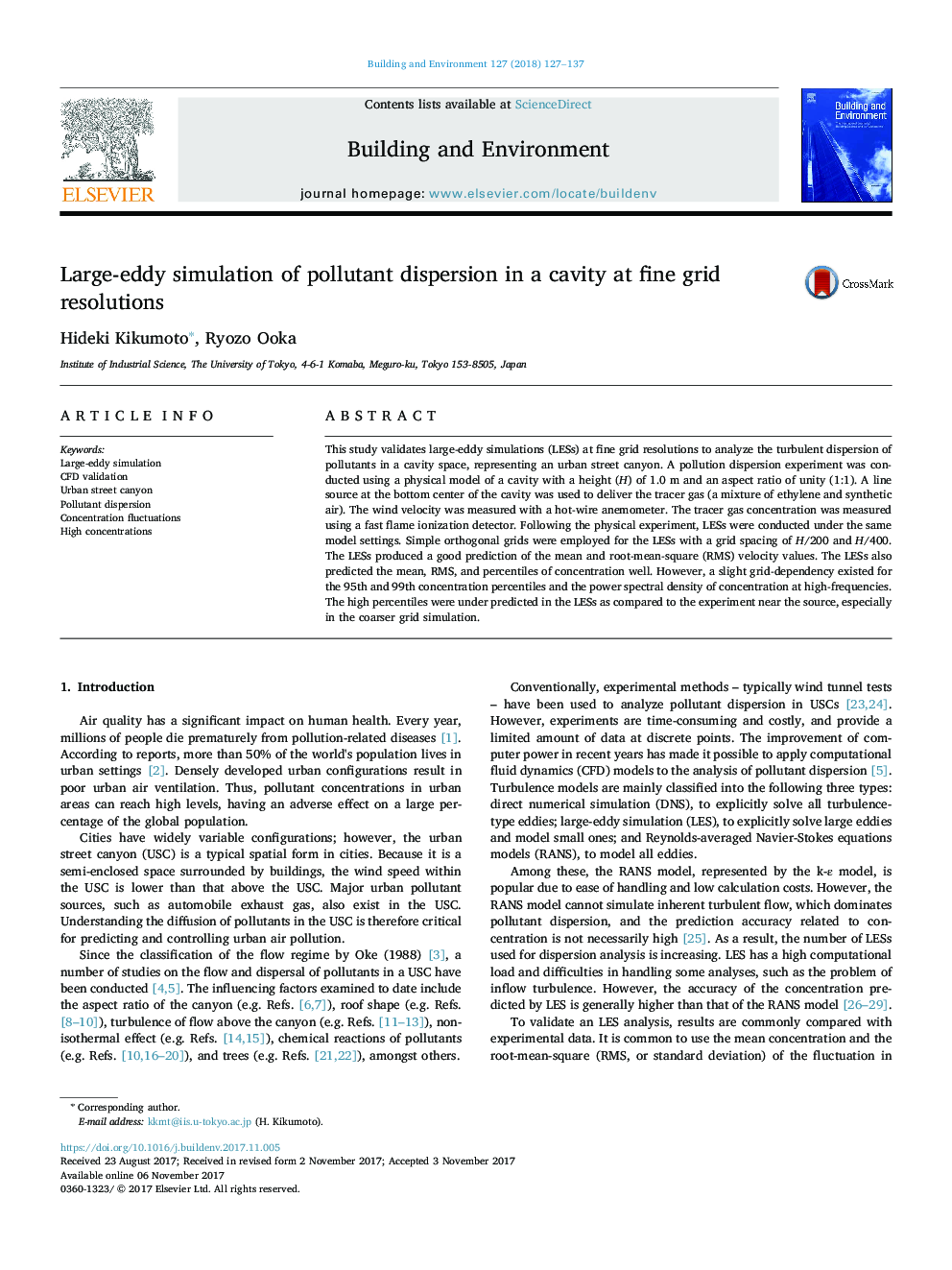| Article ID | Journal | Published Year | Pages | File Type |
|---|---|---|---|---|
| 6698466 | Building and Environment | 2018 | 11 Pages |
Abstract
This study validates large-eddy simulations (LESs) at fine grid resolutions to analyze the turbulent dispersion of pollutants in a cavity space, representing an urban street canyon. A pollution dispersion experiment was conducted using a physical model of a cavity with a height (H) of 1.0Â m and an aspect ratio of unity (1:1). A line source at the bottom center of the cavity was used to deliver the tracer gas (a mixture of ethylene and synthetic air). The wind velocity was measured with a hot-wire anemometer. The tracer gas concentration was measured using a fast flame ionization detector. Following the physical experiment, LESs were conducted under the same model settings. Simple orthogonal grids were employed for the LESs with a grid spacing of H/200 and H/400. The LESs produced a good prediction of the mean and root-mean-square (RMS) velocity values. The LESs also predicted the mean, RMS, and percentiles of concentration well. However, a slight grid-dependency existed for the 95th and 99th concentration percentiles and the power spectral density of concentration at high-frequencies. The high percentiles were under predicted in the LESs as compared to the experiment near the source, especially in the coarser grid simulation.
Keywords
Related Topics
Physical Sciences and Engineering
Energy
Renewable Energy, Sustainability and the Environment
Authors
Hideki Kikumoto, Ryozo Ooka,
